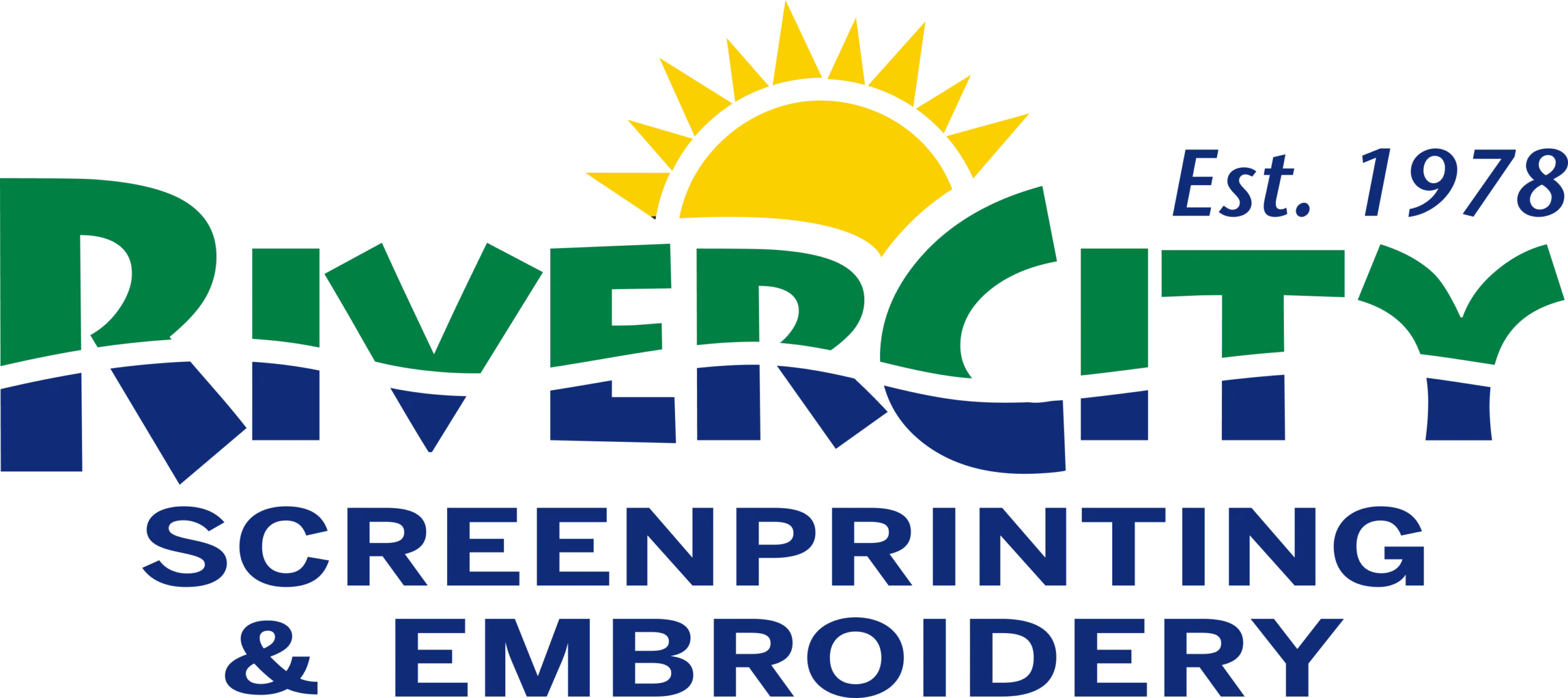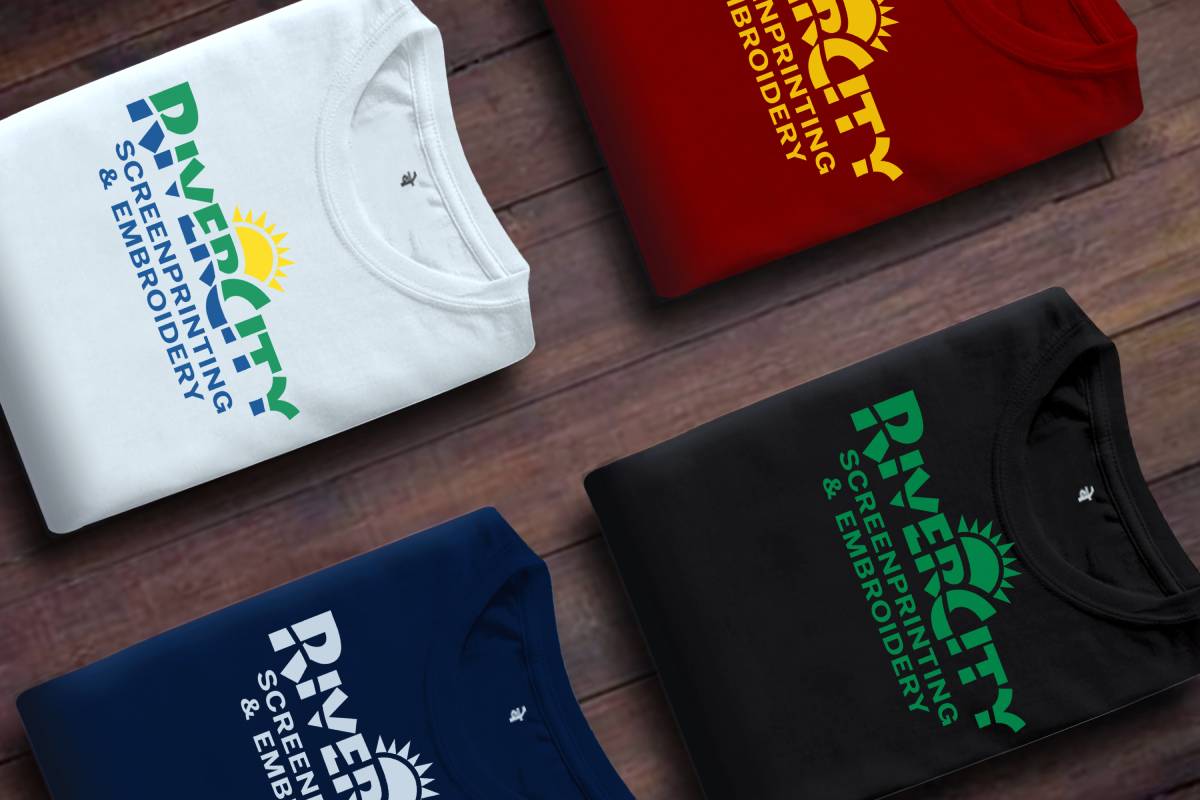When you first get an exciting idea for a fresh t-shirt design or a new company logo, it’s easy for that initial burst of inspiration to dwindle when faced with practical decisions. One of the key considerations is which garment printing technology to choose, especially when it comes to embroidery in San Antonio and San Antonio screen printing.
Among the most popular methods are direct-to-garment printing (DTG) and screenprinting. Making the right choice is crucial for customer satisfaction, cost-saving, and future business expansion. So, take the first step and select the method that works best for you.
You need to do your homework before making a decision about printing methods, such as:
- Is it compatible with my design?
- How cost-effective is it in terms of time and money?
- Is it friendly to the environment?
Here, we’ll examine the distinctions between DTG and screen printing, the patterns they perform great with, and how environmentally friendly each method is.
In order to understand screen printing, we must first understand what it is.
To print on cloth, ink is forced through a woven screens (also known as a mesh stencil) using the screen printing technique. The ink does not penetrate the cloth; rather, it sits on top of it as if it were an overlay.
It is necessary to create a separate screen for each aspect of your design while screen printing. Colors and design components are then added layer by layer to the garment after that. The longer it takes to print your design and the thicker it feels on the product, the more layers it has.
Screen printing is primarily used for large-scale production because of the lengthy setup time. Even if you only plan to print a few t-shirts, the time it takes to make the stencils for your design is not worth it.
Screen printing is most effective with what kinds of designs?
Solid graphics without minor things work best with screen printing. Symbols, shapes, and basic typography are all things to consider screen printing for. This is due to the fact that creating stencils for elaborate patterns takes a long time and poses a significant printing challenge.
Since each color is applied individually, screen printing is mainly used for designs with a limited number of colors. It is common for print providers to impose a limit on the number of colors you can use in your design, with most allowing no more than nine.
Is screen printing environmentally sound?
If you run a store, you should also be conscious of the environmental impact of your operations. As a result, it’s critical to consider the environmental impact of each printing procedure.
Typically, screen-printing sellers purchase in bulk and afterwards ship out the products as orders come in. Because of this, there is a risk of excess production, which is among the main issues being addressed by the sustainable fashion movement.
As a result, screen printing utilizes a lot of water and uses plastisol inks that do not biodegrade, making it environmentally unfriendly.
Does screen printing fit your company’s needs?
However, screen printing is a cost-effective option for designs that are simple and use only a few colors. Order minimums range from 5 to 100 items for most third-party print services.
The final cost of your bulk screen printing order is defined by the amount of color schemes in your design features and the number of screens required to print it. As a result, if you’re just getting started or want to play around with different designs, screen printing can be expensive.
If you don’t want a jumble of printed shirts all over your house or business, ordering in quantity means you’ll have to find out where to keep them. You’ll be unable to sell as many designs as you’d want because each one needs to be produced in large quantities.
To avoid contributing to textile waste, you should also assess whether or not you can resell all of the things printed. For new entrepreneurs without an established consumer base, this can be impossible to foresee.
Depending on the printing service, you may be required to send print files that have been divided into layers for each color. They may inquire as to what ink color codes you intend to utilize when printing your artwork. It’s not the best option if you’re hoping for a “upload your idea and ignore about the rest” experience.
There are a lot of questions about direct-to-garment printing
Ink is sprayed directly onto the garment via the DTG printing procedure. The ink is subsequently absorbed into the fabric’s fibers. It’s like printing on papers, except for clothes instead. DTG’s primary selling point is its simplicity when it comes to printing one-offs, as there is virtually no setup time required.
Embroidery in San Antonio
When it comes to selecting the most suitable printing method for your latest t-shirt design, there are numerous factors to consider. We trust that this informative article has provided clarity regarding the distinctions between DTG printing and Screenprinting, answering any questions you may have had. If you require further information or have any queries about screen printing or DTG, please don’t hesitate to contact RiverCity Screenprinting & Embroidery. Our highly knowledgeable team of experts is at your disposal, ready to assist you in resolving any uncertainties you may have. As a highly reputable company specializing in San Antonio screen printing, we take pride in providing top-notch service.

